As we come to the close of 2022, we take a moment to reflect on what we’ve learned these last few years, and more importantly, what new challenges and opportunities lie ahead. We spoke with hospitalists and leaders from a variety of institutions to get their feedback. The views they’ve shared are their own and not those of their institutions.
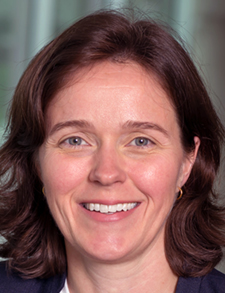
Dr. Thompson
Rachel Thompson, MD, MPH, FACP, SFHM, SHM president, is the chief medical officer at Snoqualmie Valley Hospital and Public Health District in Snoqualmie, Wash.
Dr. Thompson says the most important lesson hospitalists have learned in the last three years is that they’re agile, innovative, bold, and connected. “We’re powerful together and must keep that top of mind as we face the coming challenges,” she said.
Those challenges for 2023 will be facing the tail end of the pandemic and, as everyone adapts to the “return to normal,” she cautions hospitalists to address their own mental health, support each other and colleagues, and address equity and inclusion. The biggest threat in returning to normal, she says, is becoming complacent. “We saw what we can do when we have to—we must harness that power and continue to drive for a better future,” she said.
Acute care leaving the hospital will be the biggest disruptor of hospital medicine (HM) in the next five to 10 years, Dr. Thompson says. “We’ll continue to see higher and higher acuity in the hospital, and lower acuity will be outside our traditional walls.”
Like most hospitalists, she wishes the world knew how truly fantastic hospitalists are. Through the pandemic, in the U.S. alone, hospitalists cared for more than 75% of the 4.5 million hospitalizations. “We led innovative care models, we did things that the medical community would have never been able to imagine pre-pandemic,” she said. “And why? How? Because we are fully committed and will do anything for our patients, our teams, and our communities.”
Dr. Thompson said SHM needs to continue to advocate for people, equity, and health care; to provide an opportunity for meaningful professional connection; to inspire innovation, to focus on building opportunities to diversify our workforce, and to educate and equip ourselves to best serve all the people of our communities.
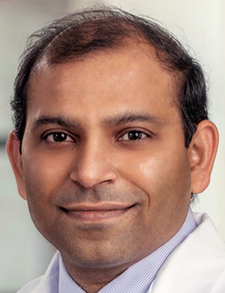
Dr. Medarametla
Venkatrao Medarametla, MD, MBA, FACP, SFHM is a hospitalist and medical director of clinical operations at Baystate Health in Springfield, Mass., and an associate professor of medicine at the UMass Chan Medical School.
Dr. Medarametla says the last few years have shown how adaptable, resilient, and persistent hospitalists are. “Every crisis during the pandemic has been an opportunity to expand our knowledge,” he said. “The pandemic gave us insight into the gaps in clinical care and it encouraged us to be more open to innovation. It also created leadership opportunities.”
The biggest challenges in 2023, he says, will be burnout, the economy, and behavioral health issues. “We’ve been in a constant battle for the last few years,” Dr. Medarametla said, “You don’t realize how badly wounded you are when you’re going through it. But when the rush of battle is finally over, you realize how much you need to heal.” Health care professionals are exhausted—physically and mentally—and you don’t automatically bounce back to where you were pre-COVID-19 just because the pandemic is under control.
He says the economy—both from a personal and professional perspective—is troubling. “Whatever you’ve invested, be it stocks or retirement plans, everything is headed in the wrong direction and even health care systems are operating in the negative.”
One direct result of the pandemic is an increase in behavioral health issues, which is compounded by the fact that psychiatry is an understaffed area of medicine. “During COVID-19, there was much isolation,” Dr. Medarametla said. “As a result, we’re seeing more and more behavioral-health-related issues in the hospital and a spike in addiction-related issues.”
He anticipates seeing patients with more complex, challenging medical issues going forward. He also expects the role of technology in health care to increase. While technology already plays a role in medicine—from the increased use of telehealth to AI-driven protocolized medicine—it will grow astronomically. For example, he says, management of lower acuity patients, observation patients, etc. could be switched to telehealth-based management.
Hospital at home is going to be the biggest disruptor, he says. “That’s where our role will be in the next 5 to 10 years,” he said. “Patients will still come to the hospital but will be much sicker with more complex health issues. But part of our schedule may be devoted to seeing patients in their homes.”
He wishes more people knew what hospitalists do. “We connect all the dots for the patient when they’re in the hospital,” he said. “We work with specialists and primary care physicians to achieve optimal, high-quality patient care. We don’t generate enough money through billing—our value comes from the higher quality of care and increased patient safety we bring to hospitalized patients. I wish more people knew and understood that.”
When it comes to SHM and how it can help hospitalists prepare for the future, Dr. Medarametla says “Use SHM as your GPS. You know where you are and where you want to go—SHM has the resources to get you there. Use it on your journey and make it more enjoyable.”
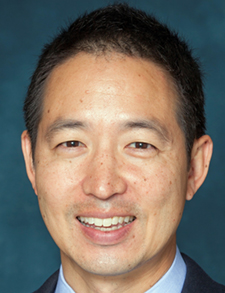
Dr. Shen
Mark Shen, MD, FAAP, SFHM, SHM Board member, is a former hospitalist and hospital CEO, and a current digital health entrepreneur.
Dr. Shen agrees that the most important lesson hospitalists learned in the last three years is that “we’re critically important to the health of the nation. During the greatest global pandemic of our era, we stepped up to provide the majority of frontline care amid great scientific and public uncertainty about the best course of action. A related lesson is we should probably receive more credit for our role and leadership.”
He says the biggest challenge in 2023 will be helping hospitals and health systems navigate the continuing economic fallout from the pandemic. And the biggest disruptor will be “continuing to face real pressure to think about delivering better value across a clinical episode and any payment system that is less focused about location or quantity of care, and instead ties reimbursement to an outcome for a clinical episode would be a significant change.”
Dr. Shen sees a link between the role technology will play in hospital medicine in the coming years and hospital at home initiatives. “I think it’s easy to imagine the ongoing evolution of hybrid care models that are augmented by technology. It’s less about new technology and more about the actual integration of existing technology with higher value methods of delivering care,” he says.
He sees SHM’s role as a supportive one—one that brings the talent together, facilitates networking and interest groups, and then helps the best ideas grow and change the world.
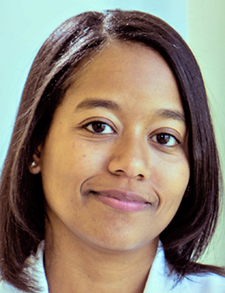
Dr. del Pino-Jones
Amira del Pino-Jones, MD, is an associate professor, division of hospital medicine, and associate dean for diversity, equity, and inclusion, at the University of Colorado School of Medicine in Aurora, Colo.
Dr. del Pino-Jones says the pandemic unmasked and amplified the inequities that exist in our health care system and health care delivery. Hospitalists have learned to critically assess their health care systems and biases, and to take a deeper look at the medical mistrust that exists within their communities, particularly among BIPOC and other marginalized communities. “There’s still a lot of work to be done,” she said. “But we’re learning and taking steps in the right direction.”
Provider wellness and burnout will continue in the coming year, she says, and she encourages hospitalists, and physicians in general, to continue looking for ways to reduce burnout and maximize wellness in their health care systems. “We often prioritize the health of others over our own and the consequences can be dire,” she said.
The biggest disruptor will be technology, Dr. del Pino-Jones says, but also it will provide one of the biggest opportunities for innovation and the ability to provide care to individuals and communities whose needs may otherwise go unmet. “There’s been a movement to provide hospital-level services to patients outside the hospital (at home). I think technology is helping to make this possible, including the increased use of virtual health care, wearable devices, etc. I think there will always be a need for hospitals and hospitalists, but technology will provide opportunities to increase the breadth and depth of our care.”
SHM can help hospitalists prepare for the future by, “continuing to provide education and support in hospitalists’ endeavors, including providing a platform and safe space for us to continue sharing, learning, growing, and working together to do better for our patients and each other,” she said.
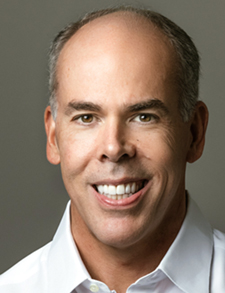
Dr. Holman
Rusty Holman, MD, MHM, is a past president of SHM, its former chief medical officer, chief operating officer, and chief clinical officer, and founder of the SHM Leadership Academies. He is also the founder of 1821Health.
Dr. Holman says, among other things, the pandemic showed us that effective leadership in medicine is important now more than ever. To him, being a leader means focusing intensely on relationships with those around you. He recommends building mutual respect, trusting others and being trustworthy, empathizing, showing humility, making the workplace psychologically safe, and looking out for the well-being of others while you look out for your own.
The pandemic accelerated and magnified existing workforce issues—loss of experienced professionals and institutional knowledge, high turnover, and pushing new trainees into the workforce—and these issues will continue to threaten effective teamwork, standardization, efficiencies, quality, and safety. “And it’s not just health care professionals and support staff, it also involves health care administrators and CEOs. This creates a new set of challenges to maintaining consistent priorities, organizational values, and culture,” Dr. Holman said.
The economy will also continue to be a challenge—costs are up (labor, supply, equipment, medications, lengths of stays) and revenue is down (reimbursements, higher margin elective cases, visits, investment income). These financial variables are a headwind. “The imperative? Hospitalists need to position their HM program as a tailwind,” Dr. Holman said. “The value of investing in and supporting the HM program (especially in leadership development) can be significant and far-reaching, not the least of which is to be allies in helping institutional leaders and boards cope with the headwinds above.”
When it comes to technology, Dr. Holman says he’s curious to see how electronic medical record (EMR) companies leverage technology to improve user interface, mobility, and integration of meaningful quality and cost data and analytics going forward.
As the founder of the SHM Leadership Academies, it’s no surprise that Dr. Holman sees leadership development as the greatest investment for hospitalists and one of the ways SHM can help them prepare for the future.
“Regardless of rank, title, or position, a hospitalist is a leader every moment from the time they walk through the doors of that building,” he said. “And yet, we receive no leadership training during any part of our formal instruction. In many ways, our training has often worked against us. We are taught and socialized to be individual decision makers instead of collaborators, and at the top of a hierarchy as opposed to being team facilitators. We are taught about respect through interprofessional DISrespect, e.g., internists making fun of surgeons; or physicians using disparaging language about administrators. Every single one of us needs professional development in building trust, teamwork, effective communication, mutual respect, creating a desired culture, and how to be part of change efforts. It does not matter if you aspire to become a medical director, a chief medical officer, or a CEO, these are life skills that will make everyone better at their jobs.”
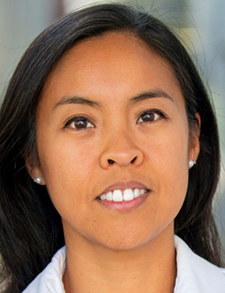
Dr. Tad-y
Darlene Tad-y, MD, MBA, SFHM, SHM Board member, is the associate chief medical officer of patient flow at the University of Colorado Hospital and the medical director for capacity at UCHealth, in Aurora, Colo. She’s also an associate professor of medicine at the University of Colorado School of Medicine where she’s an academic hospitalist.
Dr. Tad-y says the most important lesson hospitalists have learned in the last three years is that hospitalists are vitally important to the success of disaster medicine and ensuring that patients can continue to access health care even when resources become scarce.
The staffing shortage that’s affected the health care industry will continue to significantly impact the day-to-day work of hospitalists into 2023 and “because the smooth operation of inpatient care relies on appropriately staffed teams, the shortage of our nurses, therapists, care managers, and many other support services is likely to negatively impact inpatient access to care,” she said.
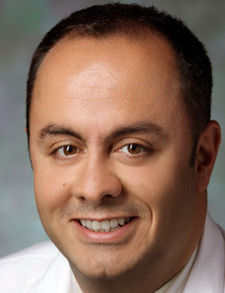
Dr. Eid
Shaker M. Eid, MD, MBA, CPE, FACHE, SFHM, is an associate professor of medicine at Johns Hopkins University School of Medicine in Baltimore, and director of research and innovation at Johns Hopkins Bayview Medical Center.
Dr. Eid says hospitalists have learned in the last three years that “we are braver than we believe, stronger than we seem, and more agile than we think we are. It was a thing of beauty seeing hospital medicine leading the fight during the pandemic from the front lines.”
He echoes what other leaders have said will be the biggest challenge in 2023—healing individually and collectively from the pandemic. “Being the heroes at the frontline did not come without a price,” he said. Dr. Eid believes healing is possible, and even more so with the right leadership.
Technology will continue to play a role in hospital medicine. We’ve already glimpsed how it can shape care options with telehealth. “The era of the Internet of Things is upon us, and we’re more connected than ever,” Dr. Eid said. “I see the use of predictive analytics, artificial intelligence (AI), and machine learning technology among the early tools we’ll very soon be using daily in hospital medicine. Think about this technology providing hospitalists with patient scores of health or wellness similar to how your FICO score is indicative of your financial health.”
Technology goes hand in hand with the digital revolution—the biggest disruptor in HM for the next decade, Dr. Eid says. With the sphere of influence and leadership roles of hospitalists expanding beyond hospital walls, “the way we practice will be more around the use of remote patient monitoring and treatment, more wearable technology providing data, using precision medicine to treat a multitude of diseases and even using augmented or virtual reality to not only treat patients but also train colleagues and future clinicians,” he said.
“SHM has always been at the forefront of educating hospitalists who will lead change in our health care system,” Dr. Eid said. “It surely can help by developing the next generation of hospitalists who along with the already established competencies are well-versed in digital health technology and innovation.”
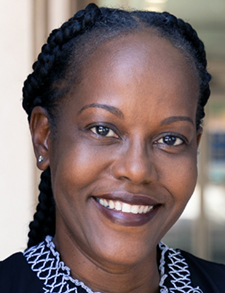
Dr. Kisuule
Flora Kisuule MD, MPH, SFHM, SHM treasurer, is the director of the division of hospital medicine at Johns Hopkins Bayview Medical Center in Baltimore.
Dr. Kisuule says hospitalists have learned many lessons in the last three years—namely that hospitalists matter and they’re not immune to burnout. “We were the first to take care of patients with COVID at most of our institutions, ultimately managing 70% of patients hospitalized with COVID. We led in the operations of COVID care, developed workflows, informed clinical decision support tools, and so much more,” she said. “As we heard from grateful institutions and patients, I hope we now firmly believe that we matter.”
For years hospitalists have stepped up to be the problem solvers for just about every situation in the hospital. “Now more than ever,” Dr. Kisuule said, “It’s evident that we can burn out and we need to take care of ourselves on a personal level if we’re going to be practicing hospitalists for the long haul.”
She says the biggest challenge for hospitalists in 2023 will be the financial constraints faced by many hospitals; budgets will be lean and under scrutiny. “Since hospital medicine is usually one of the most expensive line items on many hospital budgets, we need to make sure that our practice stands up to any financial scrutiny,” she said. “Hospital budgets may also make it challenging to operationalize great ideas, particularly those learned from the pandemic.”
Dr. Kisuule also reminds hospitalists how important work-life balance is. “We’ll have to be creative in ensuring wellness, joy in practice, and work-life balance for our teams without compromising patient care and without raising our costs,” she said.
As for technology, there’s no going back. She says we’ll see an expansion of telemedicine, and the programs that began during COVID—tele-nocturnists, and clinical decision support—will continue. She also thinks machine learning will continue to be incorporated into HM, hybrid meetings will continue, and learning from colleagues around the world will continue through virtual talks.
Hospital medicine has evolved since its inception and a big disruptor, she believes, will be a renewed emphasis on practice beyond the four walls. Dr. Kisuule also says co-management is going to grow. “As the population continues to age, we’ll see more hospitalists as the primary team in unusual specialties such as psychiatry with the psychiatrist as a consultant,” she said.
Dr. Kisuule says SHM can help hospitalists prepare for the future by continuing to provide networking opportunities, advocate for policy changes that affect them and their patients, offer meaningful education, support the expansion of the specialty internationally, and be an organization that values diversity, equity, inclusion, and a just society.
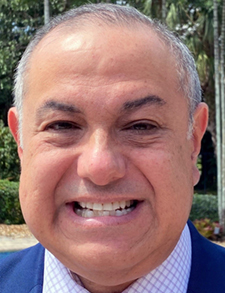
Dr. Manjarrez
Efren Manjarrez, MD, FACP, SFHM, SHM Board member, is an associate professor of clinical medicine, division of hospital medicine, at the University of Miami Miller School of Medicine, Miami.
Dr. Manjarrez says the most important thing hospitalists have learned in the last few years is the need to value their mental health.
He wishes the world knew that hospitalists are the backbone of the health care system and that their research on hospital medicine is world-class in the areas of patient safety, quality improvement, perioperative medicine, medical education, bedside procedures, and point-of-care ultrasound. “It’s the innovations from hospitalists that are advancing the processes and systems of care,” Dr. Manjarrez said. “As a result, people should value hospitalists in their communities like they do their oncologists or cardiologists.”
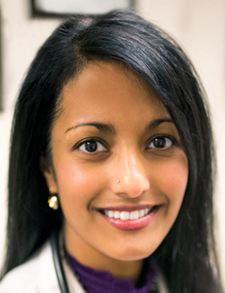
Dr. Sahoo
D. Ruby Sahoo, DO, MBA, FACP, SFHM, SHM Board member, is a hospital medicine performance director for TeamHealth and resides in Austin, Texas.
Dr. Sahoo says an important lesson hospitalists have learned through the COVID-19 pandemic is their value. Hospitals and communities that have hospitalists have always thrived, and through the pandemic, they not only thrived but survived because of hospitalists, she says. “We supported our communities through the pandemic in a way that wore us all out but made many of us incredibly proud to have the gift to do what we do.”
The biggest challenge hospitalists will face in 2023 is going to be the chronic state of burnout, she says. While hospitalists have proven they’re adept stewards of quality, safety, patient throughput, accuracy of documentation, patient experience, and efficiency of care, they can’t fix everything all at once, and certainly not by themselves. “Hospitalists must be supported by administrative leaders and consultants (not dumped on) and our voices truly heard,” Dr. Sahoo said. “We should be involved in major decisions being made at every level that affect the care of patients—within the government, corporate medical groups, multi-specialty groups, hospital medical executive committees, etc.”
Dr. Sahoo would love to see technology used to reduce the workload of hospitalists. She says during the past 15 years, the administrative burden put on hospitalists has increased significantly, but very little has been removed from their plates. “I want to see standardized and automated patient distribution, HIPAA-compliant and concise nurse, case manager, specialist communications, documentation made easier, billing that pulls from documentation, etc.,” she said.
The collective voice of hospitalists has the potential to be so powerful, but only if we recognize our common goals and unite. “SHM is the organization I’ve always turned to that provides us with not only resources to help us in our practice of medicine, but also to advocate for us politically and represent us as the caring physicians that we are,” Dr. Sahoo said.
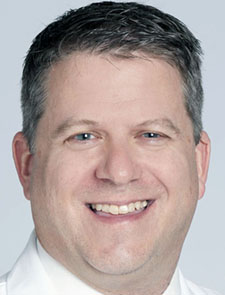
Dr. Wardrop
Richard M. Wardrop III, MD, PhD, FAAP, FACP, FHM, is the program director of the internal medicine residency program at the Cleveland Clinic in Cleveland.
For Dr. Wardrop, the biggest lesson he’s learned and believes many would agree with is that COVID was a hospital medicine disease and that HM as a specialty evolved and grew itself around this problem, to the benefit of the future of the entire specialty. While COVID affected many frontline workers the majority of COVID care was delivered in the inpatient hospital setting.
The biggest challenge moving forward, he says, will be finding our footing and applying the lessons learned during the pandemic while intermittent COVID surges and lingering staff shortages continue. “It’s finding the sweet spots in the “new normal” as the financial pressures are there now more than ever,” Dr. Wardrop said. “We must continue as a specialty to keep pushing for growth and maturation/expansion of our teams in continued uncertain times.”
He sees electronic medical records (EMR) dominating the discussion in technology in most systems—specifically using the EMR to better share data between centers and providers, an obvious place where AI tech can be applied. “I also think AI will rise to a level of sophistication that may be able to inform treatment pathways, decisions to affect LOS [length of stay], and patient safety/quality,” Dr. Wardrop said. “Finally, virtual meetings and continuing medical education are here to stay. Technology will allow us to share from greater distances like never before.”
The biggest disruptor, unfortunately, will be the financial uncertainty lurking in many centers and systems for the foreseeable future. This will lead to stagnant growth and minimal risk-taking when it comes to designing new models of care and new initiatives in many HM programs, Dr. Wardrop says. “This lack of financial confidence may allow a “status quo” to predominate that will disrupt the ethos of HM practice which is about continuous quality improvement and process improvement.”
He wishes more people understood that this career is not “just”—as in, “they’re just a hospitalist.” Hospitalists play central roles in patient care outcomes, safety, quality, medical education, etc. “We provide all these every day,” Dr. Wardrop said. “And all over the U.S., the reason hospitals are safer and better at providing care in the past 20 years is because of the rise of HM!”
When it comes to the Society, Dr. Wardrop says SHM prepares hospitalists for the future in a variety of ways through programming, CME, leadership training, etc. It provides a professional home for so many HM physicians of all career stages and practice types. “SHM leadership serves a vital role modeling function by aligning with key stakeholders in the lives of HM members via the American College of Physicians, American Board of Internal Medicine, American Medical Association, and the Society of General Internal Medicine,” he said. “Through this alignment, SHM and its membership are in the thoughts and plans of these other organizations that also support HM.”
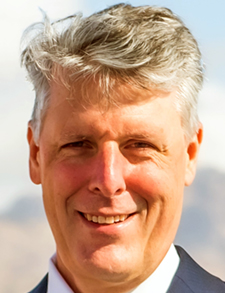
Dr. Whelan
Chad T. Whelan, MD, FACP, MHSA, SFHM, SHM Board member, is a clinical professor of medicine at the University of Arizona College of Medicine Tucson and serves as a strategic advisor to the University of Arizona Health Sciences, in Tucson, Ariz.
Dr. Whelan says the last three years have been truly life-altering for anyone in health care and hospitalists as individuals, groups, and a profession are no exception. He hopes they realize the incredible impact they’ve had during a time when the U.S. health system came close to reaching the tipping point of collapse, multiple times.
The biggest challenge for 2023, he says, is going to be moving from a national health crisis defined by a clear enemy, COVID-19, into one that is a crisis defined by what’s missing rather than what we’re battling. “The great resignation has hit health care hard and I’m afraid it will continue well into 2023,” Dr. Whelan said. “This massive shortage of health care workers will continue to require those who remain to work harder and differently and for health systems to make more difficult decisions about what they do and what they don’t do just to stay afloat. As with anything that hits the acute care space hard, hospitalists will be at the tip of the spear for this challenge of workforce shortages in 2023 and beyond.”
Technological advances will continue to flood into health care for the foreseeable future and influence hospitalists’ daily lives, but, Dr. Whelan also says, over the longer term they’ll shape the very definition of what it means to be a hospitalist. “I think it’s safe to assume tech advances will target patient engagement, clinical workflows, and transforming data into information. What will be key is for hospitalists to be engaged and activated stakeholders who advocate not for the exciting ‘shiny new thing’ but those technologies that will make meaningful improvements in outcomes and efficiencies.”
There is a lot of discussion about disruptors in health care. The traditional list, he says, includes the massive technology giants (Google and Amazon) entering health care (again); pharmacies and insurance companies attempting vertical integration to lower cost and consolidate markets; and the private equity-backed startups looking for the next game-changing technological solution. Dr. Whelan predicts one or more of these will likely land a big win in the next five to 10 years that will fundamentally change health care delivery in some unknown way.
“I do believe there’s a disruptor that is known and will land with almost near certainty…the massive workforce shortage,” he said. The shortage will change hospitalists’ lives so it’s imperative to learn new ways of working that support hospitalists and the clinicians who make up the broader team. “HM leaders need to embrace change as HM has historically done and find new paths to a model that provides high-quality outcomes and sustainable careers.”
Dr. Whelan believes SHM should continue its role in the professional development of individual hospitalists, hospital medicine leaders, and the profession as a whole, and support and advocate for members’ interests. “Through policy, advocacy, education, and partnerships, SHM must be the voice for our profession to assure it continues to thrive in these rapidly changing times,” Dr. Whelan said. It should also continue to challenge itself and its membership. “It was not too long ago that hospitalists were a new concept, a disruptor. SHM needs to keep that drive for disruption and transformation aimed at improving the value of health care alive by continually helping ready HM leaders and members to embrace progress and change, even when it can be uncomfortable and even scary.”
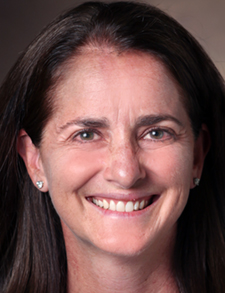
Dr. Rehm
Kris P. Rehm, MD, MMHC, SFHM, SHM president-elect, is the associate chief medical officer of children’s services in the department of pediatrics at Vanderbilt University Medical Center in Nashville, Tenn.
Dr. Rehm says that though hospitalists have always known they’re a valuable resource and important team members, COVID made it even more obvious. “They filled so many needs in an ever-changing environment, implemented new protocols based on the latest research that was coming at them quickly, and applied evidence-based care to give patients the best possible outcomes,” she said.
The lingering effects of the pandemic will be the biggest challenges in 2023, she says. “In pediatrics, we’re no longer able to predict seasons of respiratory illnesses,” she said. “We’re currently in the biggest surge that we’ve ever seen in my professional career, and the longest lasting. This inability to predict the surges or see light at the end of the tunnel is the new normal.” Because of this, Dr. Rehm says one challenge for hospitalists will be continuing to figure out ways to care for patients as efficiently and effectively as possible given the constraints of bed space, staffing issues, hospital finances, and shortages.
Technology’s role is an interesting one, Dr. Rehm says, especially when you consider how quickly we transitioned to telemedicine during the pandemic. “Our ability to provide services to families, either in their homes or other locations, during the pandemic was really exciting,” she said. “And now as the crisis ends and reimbursement will change, our roles and our abilities to do things like telemedicine will potentially change.”
Those changes, combined with the workforce shortages, make this the perfect time, she says, to consider other ways we can use AI in hospital medicine, whether for remote monitoring or hospital at home situations.
Dr. Rehm says the next generation of young HM professionals will be the next positive disruptor in the field. “They’ve taught us that work is part of life, but work is not all of life,” she said. “And we need to really embrace taking care of our workforce and that might mean we don’t reward overworking. We need to think about the well-being of our workforce and that may come at a higher cost so we’re going to have to figure out where we can improve efficiencies and reduce some of our operational expenses.”
As SHM’s president-elect, Dr. Rehm is excited about the role the Society can play in the future of hospital medicine. “I’m thrilled to take on my role as president at the next annual meeting and to think about how to really engage with the frontline members of our organization and those who are providing care every day,” she said. “Things have changed so much in the past few years and so have the needs of our members. SHM has an incredible history of providing resources in education, practice management, and advocacy. It’s done a good job of helping partner organizations to use our voice to help advocate for our patients and I’m really proud of that and look forward to continuing to talk with members and to do a needs assessment to unveil the future of SHM.”
All of the physicians gave a good accounting of their organizations and there educated views. I was impressed that they considered the current situation , but also looked to the future of medicine and the improvements to come in applying technology and practice